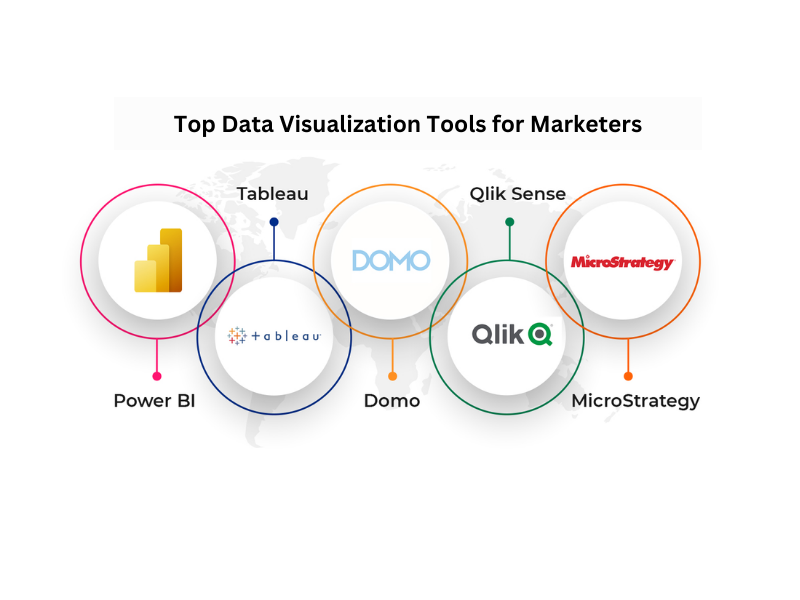Ever felt lost in a sea of marketing data? You’re not alone. In today’s fast-paced digital world, marketing is more data-driven than ever before. Marketers are bombarded with data from every direction—website traffic, social media engagement, email open rates, and more. It’s overwhelming, right?
But here’s the good news: there’s a way to turn that data chaos into a strategic advantage. The secret lies in mastering marketing analytics. By understanding and leveraging the power of analytics, you can make smarter decisions, optimize your campaigns, and ultimately, drive better results for your business.
In this guide, we’ll explore why marketing analytics is essential for modern businesses and how you can start harnessing its power today. Whether you’re new to the concept or looking to refine your skills, this post is your roadmap to getting started with marketing analytics.
What is Marketing Analytics?

Marketing analytics is like a compass for your marketing efforts. It’s the process of measuring, managing, and analyzing your marketing performance to maximize its effectiveness. But let’s break it down a bit.
Imagine you’re running a marketing campaign. You’ve put in the work—created content, set up ads, sent out emails—but how do you know if it’s working? Are people engaging with your content? Are your ads driving sales? That’s where marketing analytics comes in.
At its core, marketing analytics is about collecting data from all your marketing activities—whether it’s website visits, social media likes, or email open rates—and turning that data into actionable insights. Instead of guessing what’s working and what’s not, you can see the results in black and white (or maybe colorful charts, if that’s your thing). It helps you understand what resonates with your audience, where to allocate your budget, and how to fine-tune your strategies for better performance.
In short, marketing analytics takes the guesswork out of marketing and replaces it with data-driven decision-making. And in today’s competitive market, that’s not just a nice-to-have—it’s essential.
Importance of Marketing Analytics in Modern Business
In the fast-evolving world of business, data isn’t just a byproduct—it’s a critical asset. Marketing analytics plays a pivotal role in transforming raw data into meaningful insights that drive strategic decisions. But why exactly is it so important?

1. Data-Driven Decision Making
Gone are the days when marketing decisions were based purely on intuition. With marketing analytics, you can make informed decisions backed by real data. This means you’re not just guessing which ad might work better or which content will resonate more—you know. Whether it’s identifying the most effective channels, understanding customer behavior, or optimizing your budget allocation, marketing analytics ensures your decisions are guided by facts, not hunches.
2. Competitive Advantage
In today’s crowded marketplace, standing out isn’t easy. But marketing analytics gives you the edge. By analyzing your competitors’ strategies, customer preferences, and market trends, you can uncover opportunities that others might miss. It’s like having a secret weapon that helps you stay ahead of the curve, ensuring your marketing efforts are always one step ahead.
3. ROI Measurement
Every marketing dollar counts, and marketing analytics helps you track exactly where that money is going—and how much it’s bringing back. By measuring the return on investment (ROI) of your campaigns, you can identify what’s working and what’s not. This not only helps in justifying your marketing spend but also in reallocating resources to the most profitable channels and strategies.
Marketing analytics isn’t just a tool; it’s the foundation for any successful marketing strategy. It empowers businesses to be more efficient, more targeted, and ultimately, more successful in reaching their goals.
Key Components of Marketing Analytics
Now that we understand why marketing analytics is crucial, let’s break down its core components. Each of these elements plays a vital role in turning raw data into actionable insights that can power your marketing strategy.

1. Data Collection
Data is the lifeblood of marketing analytics, and it all starts with collection. This involves gathering information from various sources such as website traffic, social media interactions, email campaigns, and customer feedback. The key here is to ensure you’re collecting the right data—data that aligns with your marketing goals. Tools like Google Analytics, social media platforms, and CRM systems are essential in this phase.
2. Data Analysis
Once you’ve collected the data, the next step is to make sense of it. Data analysis involves interpreting the numbers to uncover trends, patterns, and insights. This could mean identifying which content drives the most traffic, understanding customer behavior, or figuring out why certain campaigns perform better than others. The goal is to translate raw data into meaningful insights that can inform your marketing decisions.
3. Reporting and Visualization
Data without context can be overwhelming. That’s why reporting and visualization are crucial components of marketing analytics. This is where you turn complex data into easy-to-understand reports and visualizations—like charts, graphs, and dashboards. These visuals help you (and your team) quickly grasp what’s happening and make data-driven decisions at a glance.
4. Actionable Insights
The final and perhaps most critical component is turning your analysis into actionable insights. This means taking what you’ve learned from your data and applying it to your marketing strategy. Whether it’s tweaking a campaign, reallocating your budget, or changing your content strategy, actionable insights are what ultimately drive results.
Understanding these components is key to mastering marketing analytics. Each step—from collecting the right data to applying insights—ensures your marketing efforts are not only efficient but also effective in achieving your business goals.
How to Get Started with Marketing Analytics
Diving into marketing analytics might seem daunting at first, but with the right approach, you can get started smoothly and build your way up to more advanced techniques. Here’s a step-by-step guide to help you kick off your marketing analytics journey.

1. Setting Clear Goals
Before you dive into the data, you need to know what you’re looking for. Start by defining clear, measurable goals for your marketing efforts. Are you trying to increase website traffic? Boost sales? Improve customer engagement? By setting specific goals, you’ll be able to focus your analytics efforts on the data that matters most to your objectives.
2. Choosing the Right Tools
Next, you’ll need the right tools to collect and analyze your data. The good news is, there are plenty of options out there. Tools like Google Analytics are great for tracking website performance, while platforms like HubSpot or Marketo can help manage and analyze your broader marketing efforts. When selecting a tool, consider factors like ease of use, cost, and how well it integrates with your existing systems.
3. Building a Team or Acquiring Skills
Marketing analytics can be complex, so having the right skills or team in place is crucial. If you’re a small business, you might start by learning the basics yourself through online courses or tutorials. For larger businesses, it might make sense to hire a dedicated analyst or team who can manage and interpret your data. Whether you build in-house expertise or outsource, the key is to ensure that someone is focused on extracting valuable insights from your data.
4. Starting Small
It’s tempting to try and analyze everything at once, but that can lead to overwhelm and analysis paralysis. Instead, start small. Pick one or two key metrics that align with your goals and focus on those. For instance, if your goal is to increase website traffic, start by analyzing your top traffic sources. As you get more comfortable with the process, you can gradually expand your analysis to include more data points.
By following these steps, you’ll be well on your way to mastering marketing analytics. Remember, the key is to start simple, stay focused on your goals, and continuously refine your approach as you learn.
Common Challenges in Marketing Analytics and How to Overcome Them
Marketing analytics offers immense value, but it’s not without its challenges. Many marketers encounter roadblocks that can make the process feel overwhelming. Here are some common challenges you might face and practical ways to overcome them.

1. Data Overload
One of the biggest challenges in marketing analytics is dealing with the sheer volume of data available. It’s easy to feel swamped by endless metrics, making it hard to know where to focus.
How to Overcome It: Prioritize the data that aligns with your specific goals. Instead of trying to analyze everything, zero in on the metrics that directly impact your objectives. Using dashboards to visualize key data points can also help you keep your focus on what matters most.
2. Skills Gap
Marketing analytics requires a unique set of skills, including data interpretation and technical know-how. If you or your team lack these skills, it can be challenging to effectively use analytics.
How to Overcome It: Invest in training or hire experts. There are plenty of online courses that can help you build the necessary skills. Alternatively, consider bringing on a marketing analyst or consultant who can guide you through the process and ensure you’re getting the most out of your data.
3. Implementation Hurdles
Even with the right tools and skills, integrating marketing analytics into your existing workflow can be difficult. Teams might resist change, or there could be technical issues that make implementation a challenge.
How to Overcome It: Start by fostering a data-driven culture within your organization. Communicate the benefits of marketing analytics to your team and provide them with the necessary support to adopt new processes. Additionally, start small with your analytics implementation to avoid overwhelming your team, and gradually scale up as everyone becomes more comfortable with the new systems.
By anticipating and addressing these challenges, you can ensure that your marketing analytics efforts are both effective and sustainable. Remember, the goal is to make data work for you, not against you.
Tools and Software for Marketing Analytics
Having the right tools at your disposal is crucial for effective marketing analytics. These tools help you collect, analyze, and visualize data, making it easier to derive actionable insights. Here’s a look at some of the most popular tools and how they can benefit your marketing efforts.

1. Google Analytics
Google Analytics is the go-to tool for tracking website performance. It provides detailed insights into your website traffic, including where your visitors come from, how they interact with your site, and which pages perform best. This tool is particularly useful for understanding user behavior and optimizing your site for better engagement and conversions.
Key Features:
- Traffic analysis
- Audience segmentation
- Conversion tracking
- Custom dashboards and reports
2. HubSpot
HubSpot is an all-in-one marketing platform that combines analytics with CRM, content management, and more. It’s especially useful for inbound marketing, helping you track the performance of your content, email campaigns, and lead generation efforts. HubSpot’s user-friendly interface makes it accessible even for those who are new to marketing analytics.
Key Features:
- Campaign tracking
- SEO and content analytics
- Social media monitoring
- Integrated CRM
3. SEMrush
SEMrush is a powerful tool for competitive analysis and SEO. It allows you to track your website’s search engine rankings, analyze your competitors’ strategies, and identify opportunities for improvement. SEMrush is ideal for marketers focused on enhancing their SEO efforts and staying ahead of the competition.
Key Features:
- Keyword tracking
- Competitor analysis
- Site audit
- Backlink monitoring
4. Tableau
Tableau is a leading data visualization tool that helps you create interactive and shareable dashboards. While it’s not exclusively for marketing, its ability to visualize complex data sets makes it a valuable tool for marketers looking to present their analytics findings in a clear and compelling way.
Key Features:
- Data blending from multiple sources
- Real-time analytics
- Interactive dashboards
- Advanced visualization options
5. Google Data Studio
Google Data Studio is a free tool that allows you to create customizable reports and dashboards using data from various sources, including Google Analytics, Google Ads, and more. It’s an excellent option for those who want to create visually appealing reports that can be easily shared with stakeholders.
Key Features:
- Customizable reports
- Integration with multiple data sources
- Real-time data visualization
- Easy sharing and collaboration
These tools offer a wide range of capabilities, from basic website analytics to advanced data visualization and competitive analysis. Choosing the right tool depends on your specific needs, budget, and level of expertise. Start by exploring the tools that align with your goals, and don’t be afraid to experiment until you find the ones that best support your marketing efforts.
Case Studies: Successful Implementation of Marketing Analytics
Understanding the theory behind marketing analytics is important, but seeing how it works in the real world can be even more enlightening. Let’s look at a few case studies where companies successfully implemented marketing analytics to achieve significant results.

1. Coca-Cola: Enhancing Customer Engagement with Data
Coca-Cola, a global leader in the beverage industry, leveraged marketing analytics to enhance customer engagement and drive sales. By analyzing social media data, Coca-Cola identified key trends and consumer sentiments related to their brand. This allowed them to tailor their marketing campaigns more effectively, targeting specific demographics with messages that resonated.
Outcome: The data-driven approach led to a significant increase in social media engagement and a boost in sales, particularly during targeted campaigns. Coca-Cola’s use of real-time analytics also enabled them to respond quickly to trends, keeping their brand relevant and connected with consumers.
2. Airbnb: Optimizing Email Campaigns
Airbnb, the popular online marketplace for lodging, used marketing analytics to optimize their email marketing campaigns. By analyzing user behavior data, Airbnb identified patterns in how and when users interacted with their emails. They used this data to personalize email content, timing, and frequency for different segments of their audience.
Outcome: This personalized approach led to higher open and click-through rates, improving the overall effectiveness of their email campaigns. The data-driven adjustments also resulted in increased bookings, as users were more likely to engage with content tailored to their preferences.
3. Netflix: Revolutionizing Content Recommendations
Netflix is renowned for its use of data analytics to enhance user experience. By analyzing viewing habits, Netflix can recommend shows and movies that align with individual preferences. This not only keeps users engaged but also reduces churn rates.
Outcome: Netflix’s recommendation system, powered by marketing analytics, has been a key factor in its global success. The personalized recommendations keep users on the platform longer, leading to higher customer satisfaction and retention rates. The success of this approach has made Netflix a leader in the streaming industry, with millions of subscribers worldwide.
4. Sephora: Driving In-Store and Online Sales
Sephora, a leading beauty retailer, used marketing analytics to bridge the gap between in-store and online shopping experiences. By analyzing customer data from both channels, Sephora was able to create a seamless experience for shoppers. For example, they used data to personalize in-store experiences based on customers’ online behavior and vice versa.
Outcome: This integrated approach led to increased customer loyalty and higher online and in-store sales. Sephora’s ability to provide a personalized shopping experience, driven by analytics, has set it apart from competitors and strengthened its market position.
These case studies illustrate the power of marketing analytics in driving business success. Whether it’s personalizing customer experiences, optimizing campaigns, or staying ahead of trends, these companies have shown how data can be a game-changer in today’s competitive landscape.
Conclusion
Marketing analytics isn’t just a buzzword—it’s a vital tool for any business looking to thrive in today’s data-driven world. From understanding your audience to optimizing your campaigns, the insights you gain from marketing analytics can transform the way you approach marketing.
Whether you’re just starting out or looking to refine your existing strategies, the key is to stay focused on your goals, choose the right tools, and continuously learn and adapt. As the case studies show, businesses that effectively leverage marketing analytics not only stay competitive but also lead the way in their industries.
Now that you’ve got the basics down, it’s time to take action. Start by setting clear objectives, selecting the tools that best fit your needs, and diving into the data that will guide your marketing efforts. Remember, every insight you gain brings you one step closer to mastering your marketing strategy.













